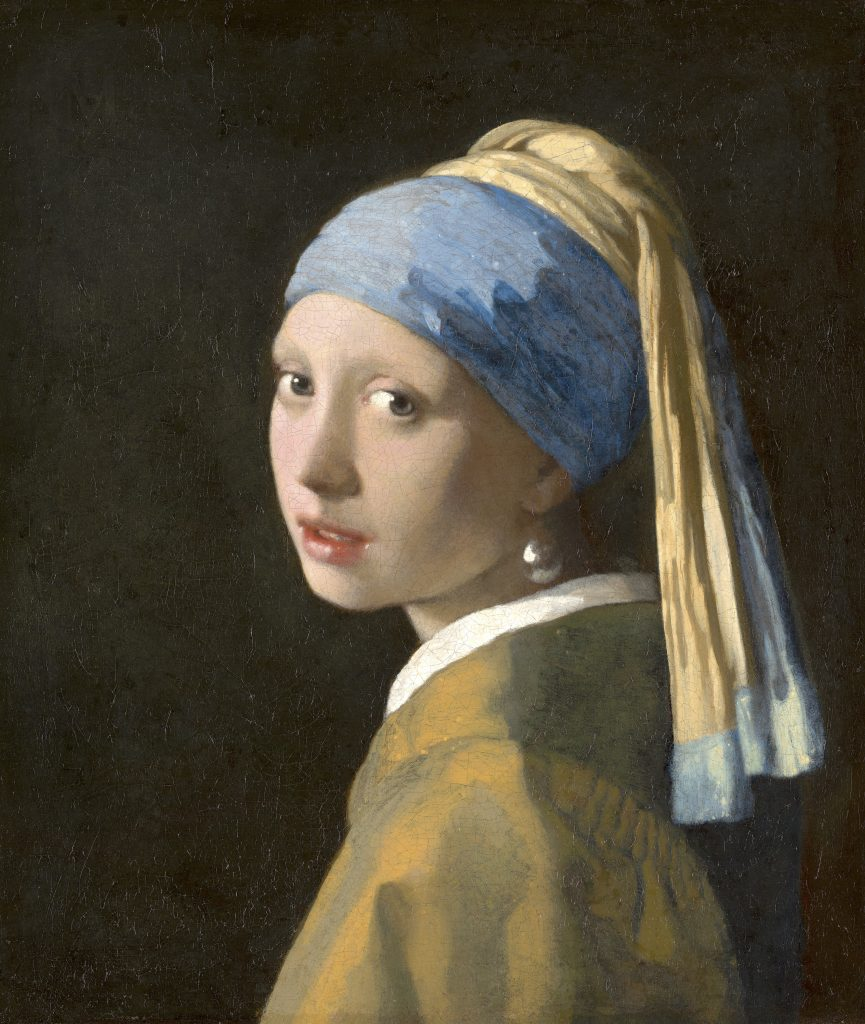The theory has ruffled feathers among the art establishment.

Johannes Vermeer, Girl with a Red Hat (c. 1666-67) from the National Gallery of Art in Washington, D.C.. Photo by Heritage Art/Heritage Images via Getty Images.
For centuries, art lovers have wondered at the identity of the sitters in Vermeer’s beloved masterpieces. To the shock of many scholars, one expert has suggested that Girl with a Red Hat (c. 1669) may in fact be a self-portrait by the artist’s daughter Maria. Furthermore, she could be responsible for several of the Dutch master’s best known works, according to a new report by author Lawrence Weschler in The Atlantic.
These claims were first published in art historian Benjamin Binstock’s controversial 2008 book Vermeer’s Family Secrets. The theory was dismissed out of hand by mainstream Vermeer specialists, but with the recent discovery that Vermeer’s Girl With a Flute (c. 1669/1675) in the National Gallery of Art in Washington, D.C. may actually be the work of an unidentified apprentice, some scholars are starting to reconsider the facts.
Often intentionally provocative in his writing style, Binstock has gained a reputation for taking an unfashionably connoisseurial approach to the history of art, openly interrogating long-accepted attributions by reassessing the works’ style against what we know about the artist’s life. Unsurprisingly, endeavors like these have tended to rile up the establishment and push Binstock to the very fringes of mainstream academia.
By first attempting to identify the various models that reappear in Vermeer’s works and in doing so, reshuffling their sequence slightly (most of Vermeer’s works have a wide range of possible dates), Binstock believed he had brought to light new inconsistencies in both chronology and style especially towards the end of Vermeer’s life. Although these unreviewed claims remained hypotheses, Binstock felt comfortable stating them as fact.

Girl with a Pearl Earring, 1664–67, oil on canvas. Mauritshuis, The Hague. Bequest of Arnoldus Andries des Tombe, The Hague.
Born in 1632, Vermeer had his first daughter Maria in 1654. According to Binstock, she replaced his wife Catharina as his main model around a decade later, beginning with Woman With a Pearl Necklace (c. 1666) and eventually starring as the subject of Girl With a Pearl Earring (1670). These dates, and most others given by Binstock in this article, are the subject of some debate among scholars.
During the 1670s, Binstock’s narrative diverges substantially from the accepted timeline, with his claim that Maria also began working as her father’s assistant and studying his methods. He designated both Girl With a Flute and Girl With a Red Hat as early self-portraits by Maria on account of their more awkward, amateurish style as much as their compositions. Neither painting has a fixed date, and Binstock opted for 1672 to align with Maria’s late teenage years.
The scholar has also attributed works like the Met’s Study of a Young Woman (1672) and both the Frick’s Girl Interrupted at Her Music (1673) and Mistress and Maid (1673) to Maria, arguing that they constitute a pastiche of the considerable skill shown in Vermeer’s greatest masterpieces.

Johannes Vermeer, Girl with a Flute, (ca. 1669-1675). National Gallery of Art, Washington D.C.
Finally, Young Women Seated at a Virginal (1674) had at one time been contested as a Vermeer but was eventually authenticated only after it was found to be painted on a canvas cut from the same cloth as The Lacemaker (also 1674). Another possible explanation for this would be if the work was by someone working closely with the artist and sharing both his materials and style.
No assistant has ever previously been associated with Vermeer, but this assumption is now being reconsidered thanks to the National Gallery of Art’s reattribution of Girl With a Flute. According to Binstock, artists at the time were not required to register their children as apprentices with the painters’ guild, which may explain the lack of a surviving record. A possible reason why Maria then stopped producing paintings after her father’s death in 1675 could be her marriage in 1674, after which she left the Vermeer household.
We’re highly unlikely to ever have a definitive answer on Maria’s possible involvement in Vermeer’s oeuvre, and the stakes of reattributing paintings are high as much for the holders of these priceless masterpieces as the scholarly reputations involved. Nonetheless, as Vermeer attracts renewed interest with a historic survey at the Rijksmuseum in Amsterdam, Binstock is still hoping that his theory might finally receive some serious critical attention.
Source: Artnet News







